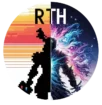Original vs Remake: Secret of Mana (1993-2018)

- Secret of Mana
- 1993
- Super Nintendo
- Squaresoft
- Secret of Mana HD
- 2018
- Playstation 4 | PS Vita | PC
- Square Enix
All the Changes in Brief
- Main story, dialogues and progression are unchanged
- New skits in inns give more context to the game’s events and characters
- Minor rewriting in cutscene and some dialogues, with no impact on the story or lore
- Main and secondary characters’ personality, looks or roles are fundamentally unchanged
- Voice-acting added to all dialogues
- Our three protagonists’ relationship feels more fleshed out
- Action-RPG gameplay is generally unchanged, including the charging system for attacks
- Ring menu is still present
- L & R button hotkeys have been added for weapon, magic & item selection (unavailable in local co-op)
- Target selection, despite hotkeys, still pauses combats
- 360° running and attack direction are now possible
- Progression logs & minimap have been added
- New auto-save feature
- Difficulty feels overall lower than in the original game
- Local co-op multiplayer is still available, but not online
- Transition from 2D pixel art to full 3D models
- Occasional design changes to monsters & bosses
- Levels’ design & layout are 1:1 copies of the original
- The world map changed from “Mode 7” to a full 3D rendering
- Cutscenes and dialogues are slightly more “cinematographic” due to 3D, though animations limited
- Rearranged soundtrack, with possibility to choose the original 16-bit music
In-Depth Comparison & Review
The original Secret of Mana allowed an entire generation outside of Japan to discover Squaresoft’s powerful storytelling, music, and gameplay. Were the (few) changes made in the HD remake worth it? Or should retro and modern gamers alike simply return to the original?
Table of Contents
ToggleStory (Pitch)
Secret of Mana (or Seiken Densentsu 2, in its original title) takes place in a world where Mana, life’s energy, has in the past caused mankind’s technological rise, before provoking the Gods’ wrath and the near extinction of civilization. The game starts many years later, as the world is rebuilding, when an orphan boy named Randi stumbles on the Sword of Mana. Pulling out the weapon from its resting place, he unleashes forces – and a destiny – he could never have imagined.


Let’s get one thing out of the way. The remake does not modify – or add to – the story in any significant way. This can be seen through the opening cutscenes, in which the English translation has been slightly reformulated, and voice-acting is now present but without any major impact on the lore or the narrative.
Original opening cutscene
Darkness sweeps the troubled land, as mana’s power fades… people await a hero who will wield the sword… Excalibur, Herald, Gigas, the blade had many names, for it has been celebrated in myths and legends throughout time. but all of these speak to just one weapon: the Sword of Mana.
Using the power of Mana, a civilization had grown strong… In time, Mana was used to create the ultimate weapon: the Mana fortress. This angered the gods. They sent their beasts to destroy the Fortress. A violent war rocked the world, and Mana seemed to disappear. Before all was lost, a hero with the Mana Sword smashed the Fortress. Though the civilization had been destroyed, the world was peaceful again. But time flows like a river… and history repeats…
Remake opening cutscene
Darkness sweeps the troubled land as Mana’s power fades… In desperate times, the people look for a hero to wield the sword of legend… Excalibur, Kusanagi, the blade has had many names, but all refer to just one weapon: the Sword of Mana.
Long ago, the world prospered and humanity thrived thanks to a power known as Mana… However, humans soon sought to use Mana to create the ultimate weapon – a floating battleship called the Mana Fortress… This greedy arrogance angered the gods, who in turn unleashed vicious beasts into the world… A violent war between the Mana beasts and the fortress engulfed the world in poison and fire until Mana had all but disappeared. In humanity’s bleakest hour, a hero wielding the Mana sword appeared and destroyed the fortress. The world was left in shambles, and yet humanity persevered, and there was peace throughout the land. But as time passes… so history repeats…
The opening scenes set the stage for the rest of the remake: no changes are to be expected story-wise, except perhaps some attempts at making things a bit more explicit to the players. For better or worse.
Story (spoilers)
Story elements shared by both games
The original Secret of Mana had a fairly simple story, but it took place in a world that felt very much alive and complex. The remake follows all of the same narrative steps, with no deviation or addition whatsoever.
The game starts 15 years after the events recounted in the cutscene, as we see the main protagonist, Randi, exploring an off-limit section of the woods with two other kids from his village. He loses balance when crossing a waterfall, and stumbles below. Upon landing, he hears a voice calling him, and leading him to the Sword of Mana, which he manages to pull out of its pedestal. This triggers the apparition of monsters all around the woods and – held responsible for it – Randi’s banishment from his village.
Following the advice of Gemma, a wandering Knight, Randi seeks some answers by consulting Luka, a sage at the nearby Water Palace. She explains that he must fulfill his destiny by restoring the Sword’s original power by collecting the force of eight Mana seeds, spread throughout the world. As he undertakes this journey, he is quickly joined by Primm, a headstrong girl looking to save her lover Dyluck from a sorceress, and Popoi, a “Sprite” linked to the Mana force seeking to recover their memory.
As they make progress in these respective quests, they increasingly recognize the shady involvement of The Empire, who also seek the Mana seeds to restore the ultimate weapon known as the Mana Fortress. With the help of Flammie, a mythical dragon, our protagonists travel the world and eventually find the eight sacred temples, each harboring a mana seed. While they manage to collect their powers – spirits imbuing their magical powers not only to the Mana Sword but also to Primm and Popoi – they fail to prevent The Empire from stealing the seeds.
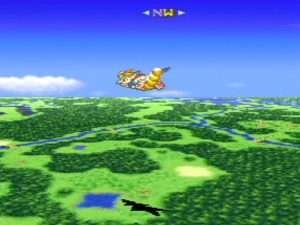
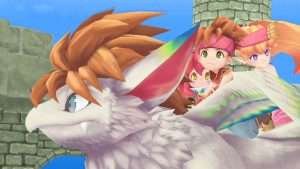
As these events unfold, they also discover the prevalent role Thanatos, a sorcerer, has in pulling the Empire’s strings and provoking many of our heroes’ predicaments: the strange force enslaving Primm’s hometown Pandora, both the abduction of Primm’s lover, Dyluck, and her friend Phanna. Once he gets hold of all eight seeds, Thanatos betrays and kills the Emperor, and invokes the Mana Fortress. In an attempt to harness the Sword’s true strength and destroy the Fortress, our heroes travel to the Mana Tree, the source of all energy, but see it destroyed by Thanatos before their eyes.
In its decaying state, the Tree talks to Randi, revealing his origin as the orphan child of both the Mana tree itself, and the previous Mana hero, Serin, alluded to in the opening cutscene and whose voice emanated from the Mana Sword by the waterfall. As a descendant of the Mana Tribe, it is Randi’s responsibility to wield the Sword and put an end to the Fortress. She also explains that due to the Tree’s destruction, a great Mana Beast will appear, as it is the only thing that can fend off the fortress and restore Mana to the world, even if it means the end of civilization.
With this new-found knowledge, our protagonists infiltrate the Mana Fortress and confront Thanatos. We then learn that his objective all along was not only to get his hands on the Fortress but also to take control of Dyluck’s body, as Thanatos’s decaying flesh required him to get a new host. Dyluck thwarts the sorcerer’s plan by sacrificing himself, allowing the heroes to defeat Thanatos in its bodiless, malevolent form.

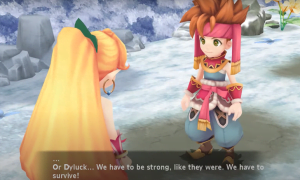
Upon defeating Thanatos, the Great Mana Beast appears to destroy the Fortress. Despite knowing that slaying the beast would remove Mana from the world our protagonists nonetheless vanquish the creature.
The game ends on a bittersweet note. Popoie is nowhere to be seen, since the Mana Beast’s demise removed Mana from the world. Randi regrets this departure “without saying goodbye”, while Primm also mourns the suicide of her lover Ryluck. The two remaining heroes are then seen traveling back to all the places, cities, and kingdoms they have visited, spreading news of what happened. The last couple of sequences suggest that Randi manages to reconcile with the village that banished him in the first place, after which he returns to the waterfall to return the Mana Sword to its resting place.
The last shot of the final cutscene brings us back to Popoi’s native village, near the Wind Temple, where we catch a glimpse of his ghostly form.
Revised dialogues
The remake’s dialogues have been revised, but do not add anything substantial to the universe and its characters. On the contrary, they are sometimes adapted to better accommodate modern audiences, sometimes losing in clarity. For example, the Mana Tree’s explanation of the Mana Tribe has been revamped to avoid any gender stereotypes:
Here’s the original dialogue:
That was your father, Serin. I was his wife…and am your mother. We are of the Mana Tribe. The women of our kind become the Tree, and the protectors of the world. The men wield the Sword, and protect against evil!
And the remake’s:
Yes, it is true. Your father was the legendary knight, and I… I was his wife… your mother. We are of the Mana Tribe. Members of our tribe are fated to become the Mana Tree to protect the world for future generations. Others, like your father, inherit the Mana Sword to fight the evils that threaten peace and prosperity.
An adaptation is perfectly understandable in this case, avoiding the stereotypical nourishing mother vs protective father figures. But the way it has been implemented ends up at best superficial, at worst unclear. The father’s role in wielding the sword, and thus our hero’s as well, seems more random than anything else, and we’re not even sure the former is a member of the Mana Tribe anymore.
Additional Inn skits
With that said one addition to the 2018 remake is the appearance of short skits whenever our protagonists rest in an inn. These mostly consist of further making explicit the relationship between the protagonists or their emotional response to certain events of the story. Although most were already apparent in the original game, here are a few elements that are made clearer to the player in the remake:
- Randi’s good-will yet lack of confidence when it comes to his quest
- The constant teasing – and thus complicity – between Randi and Primm.
- The growing friendship between the trio…
- … making Popoie’s disappearance more emotionally impactful than in the original



Beyond that, the skits don’t add much to the lore or story, and more often act as quick reminders of the events we have just witnessed in the gameplay.
Characters
While the characters have now 3D models and proper textbox avatars, not much has been modified in how they are presented to the player: personality traits, motives, and actions are consistent among both original and remake. The latter’s revised dialogues and additional skits helps in making the characters a little more fleshed-out, without any big twist to how we remember them. The voice-acting – be it in Japanese or in English – is more of a hit-or-miss, with some passages making the characters feel a little less invested than they should be at times. Click on the pictures below to find out more:
Gameplay
Exploration
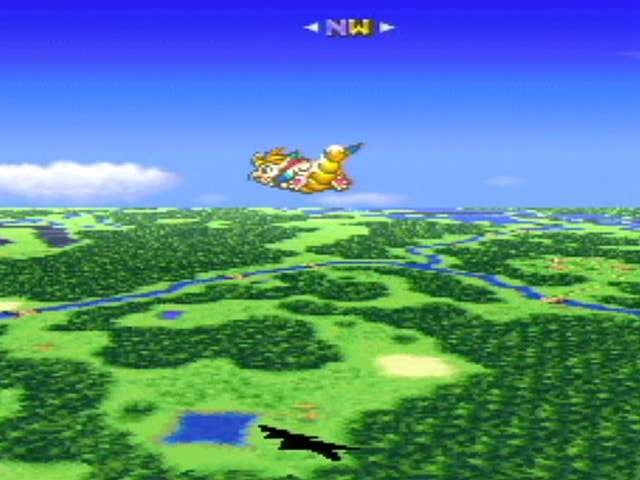
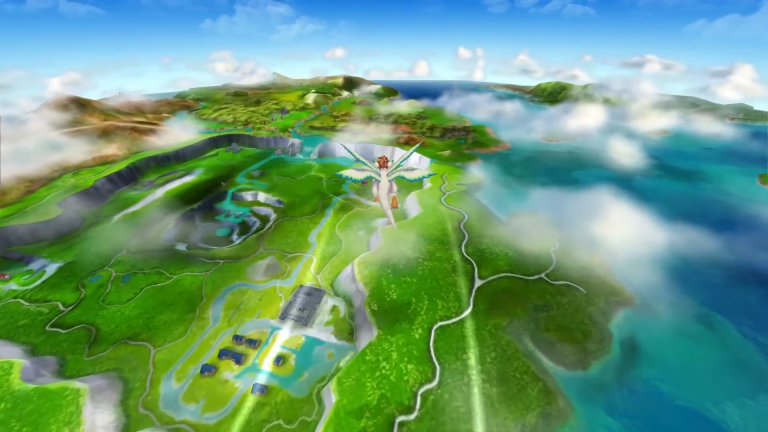


The ring menu hasn’t been changed either, except for a few additional sub-menus such as a journal, helpful to keep track of our next objective. The ergonomy hasn’t witnessed a much-deserved upgrade, unfortunately. A downside to the original game was indeed how the use of this menu to cast magic led to very saccaded boss fights, during which we would most of the time spam the Y and X buttons. In the remake, you can create only a couple of shortcuts with the L1 and R1 buttons (for all the characters included, that’s it). Worse, this feature is disabled when in multiplayer.
This leads me to my last point gameplay-wise: multiplayer is fortunately still available, but only offline. Game Informer reported how the remake’s producer, Masaru Oyamada, argued that this choice was made to stay true to the original game. But like many other things, it seems more like an excuse for a rushed (or under-budgeted) remake project, than anything else. Younger gamers’ habits have changed, and older players like myself have simply fewer opportunities to launch a 2-hour gaming session at home with my buddies after work.
Combat
Combats in the original Secret of Mana were typical of A-RPGs then, with however some specificities that made them satisfying while frustrating at times. The attack button allows your controllable character to hit the enemy with your equipped weapon, but only at certain intervals. Indeed a gauge would need to fill at 100%, taking roughly a second or two, for your blow to be at full power. By using the same weapon regularly and upgrading it at the dwarven blacksmith, you could unlock special attacks triggered by holding the attack button. AI handled the regular attacks of the two other members of your team. Finally, items and magic could only be triggered by selecting them in the ring menu, and thus pausing the game. Those mechanisms put together led to an uneven pace during combat, especially during bosses where the main strategy was essentially to spam magic, thus constantly pausing the game.
The remake is a missed opportunity in this regard. The 100% gauge is still there, as if no lessons were learned from the game’s sequel – Seiken Densetsu 3 – which had abandoned that feature. The new L1 and R1 shortcuts are also poorly exploited, since while they can make switching weapons seamless, using them for magic still pauses the game so that we can select the target. The main strategy against bosses – spamming magic by pausing the game – remains. Another thing that struck me was how, overall, the difficulty of the bosses seems to have been nerfed down. While the original game was not particularly difficult, some bosses were tricky to deal with and often required grinding sessions beforehand for both stats and items. Overall, we end up with a combat system in the remake that remains largely untouched and, at times, even less engaging than in the original.


Artistic direction
One of the main strengths of the original Secret of Mana was its artistic direction. The graphics themselves were impressive, with beautifully animated sprites and colorful environments that, to this day, still hold up very well. Of course, later A-RPGs such as Seiken Densetsu 3 (Trials of Mana) or Tales of Phantasia pushed the Super Nintendo even further in terms of performance, but Secret of Mana’s unique style and identity can simply not be forgotten.
What characterized the entire artistic direction of Secret of Mana was probably how impactful, colorful, and often surprising it felt throughout. Anyone who has played the original game will remember a certain puzzle in a forest involving the passage of the four seasons, and the distinct gameplay and visual experience it gave us. Or the unsettling techno-beat music accompanying a boss fight. In other words, the original game’s ability to set and change moods very quickly was Secret of Mana’s biggest artistic strength.
Unfortunately, this has to some extent been lost in translation in the remake, as illustrated by the very first seconds into the game. The title screen is left pretty much untouched, and that was a smart choice. The tempo is very similar, allowing a slow build-up to the beautiful music and original illustration introducing us to the melancholic beauty of the Tree of Mana. But the opening cutscene, which as we have seen earlier did not change much when it comes to the narrative, takes however a very different stylistic approach that is not as effective.
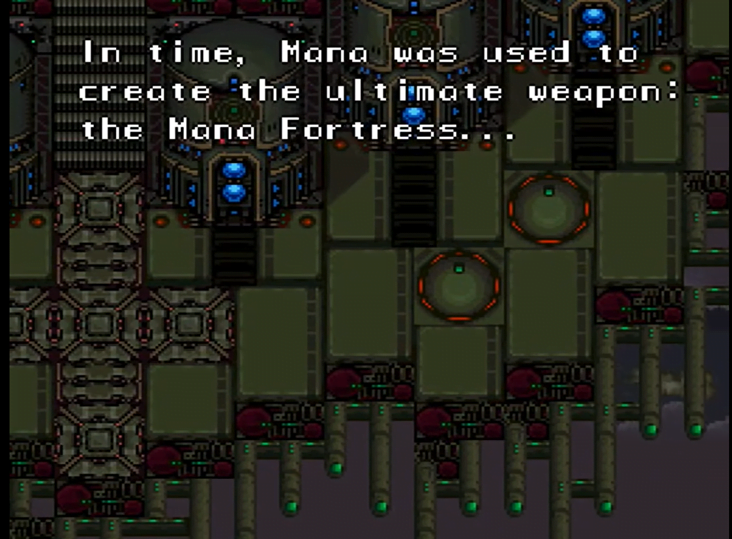

In the original game, the Mana Fortress was presented as a force of nature quite intelligently through the in-game engine graphics: no single frame would show the entire structure, but only parts of it. We could only imagine, seeing how many cannons were noticeable on a single frame, the sheer power it could have. This transitions into a second shot of the desolated landscape, and amidst it, the venerable Mana Tree, beautifully conveys the concurrent feelings of dread and hope the game’s premises build upon. The two scenes put back-to-back contrast visually: the extremely “industrial”, “brown”, and “dense” visuals of the fortress are nothing like the open yet bare natural landscape of the Mana Tree. Then, before we start our adventure as Randi, a traveling shot goes over the World Map in Mode 7 technology, a technological feat at the time for the Super Nintendo.
In the remake, the opening sequence’s style is very different, editing still artworks into a collage. This approach leads to two main differences with the original which, in terms of artistic direction and narration, might be counterproductive.
First, the transformation of in-game footage – and their inherent technical limitations – into specifically designed artwork for this opening paradoxically leads to a much more uniform and “sophisticated” presentation of the subject matter. This leads the visual identity of that opening sequence to be more diluted, and less emotionally impactful than the raw, simple yet powerful imagery of the original game. This issue is extended to the broader transition from a 2D game to a 3D remake. While the visual layout during the playable portions of the game sticks very closely to the original game, the overall transition to 3D sprites nonetheless leads those atmospheres to be less marked in terms of colorfulness, saturation, contrasts, and overall impact.
Second, the remake’s collage style allows to include many elements, objects, and “plot points”, therefore leading the whole imagery to be more explicit: we see the Fortress in its entirety, the Beast it fights against, the blasts leading to the end of the world, and so on. Like many other elements discussed previously in this remake regarding the story and its writing, the artistic direction for that cutscene is once again very “straightforward”: we try to make things clearer to the audience, but to some extent at the cost of the more sensory narration and “moods” the original game provided so masterfully.
The same can be said about the game’s music. While the re-arrangements have tried to depart enough from the original while keeping each track very recognizable, the use of modern samples and instruments logically instead of good old midi sounds made the soundtrack more smooth and “polished”, at times lessening the surprise we would feel upon hearing, for the first time, some of the very unconventional and aggressive tracks used for some bosses and locations in the original game. And this is on top of some tracks being simply spoiled due to weird additions of sonorities or rhythms – perhaps attempting to mimic the unconventional composition of the original music.
Which should you play?
Secret of Mana’s missed opportunity
As much as it is worth supporting any project bringing more players to Secret of Mana, and the Mana series in general, this remake is too minimalistic and shortsighted to bring any added value to the original. The few UI additions in regard to exploration or item/spell management are just not enough to overcome the remaining limitations of the original game. In fact, the technical upgrades to the visuals and the music are at best unnecessary and at worst undermine, at times, the artistic beauty and uniqueness of the original.
Except for the skits and the voice-overs – allowing us to better invest ourselves in the personalities and fate of our protagonists – and some minor, still perfectible gameplay features such as the L&R shortcuts, Secret of Mana Remake is a missed opportunity. Younger and older players alike might simply be better off playing the original, which has been re-released multiple times and provides a timeless window into Square’s legacy – and creative prowesses – of the 16-bit era.
Sources & further reading
All visuals are © Square Enix. Some have been slightly adapted to better illustrate our analysis.
Sources:
- Square-Enix official website & shop: for visuals of the original and remade game
- The Mana Series Facebook page for some visuals of both the original and remade game
- NintendoComplete’s Youtube full playthrough of Secret of Mana (1993) for some screenshots
- Davidvinc RPG’s Youtube compilation of the remake’s Inn Scenes for some screenshots
- Game Informer’s article for a some developers’ insights
Table of ContentsToggle Table of ContentToggle
Author
-
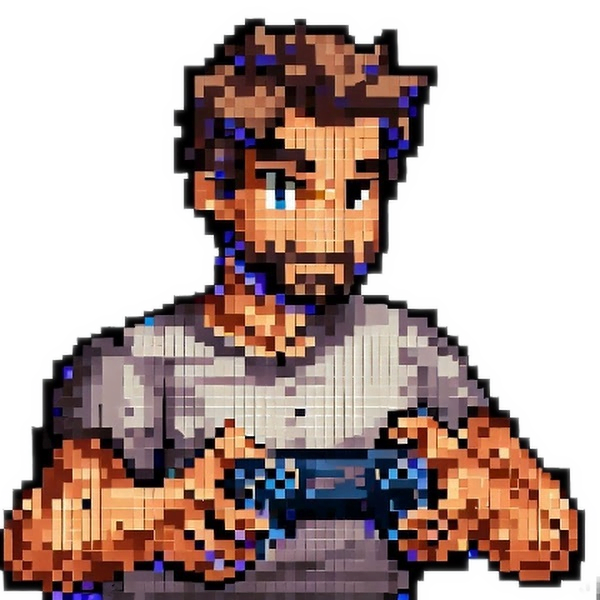
I'm a long-time gamer, prof and writer who, between family and professional duties, still tries to keep up with my passion. I'm fascinated by video game remakes (even bad ones), and how they allow older and younger players to dive back into - and reflect on - the history of video games.
You can follow me here, or also @retrotohero on Twitter(X) and Youtube for all sorts of content!
View all posts
